 W
WLog buildings and structures can be categorized as historic and modern. A diverse selection of their forms and styles with examples of architectural elements is discussed in the following articles:Log cabin – a rustic dwelling Log house – a style and method of building a quality house Izba – a type of Russian peasant house, often of log construction. The Cabin of Peter the Great is based on an izba. Crib barn – a type of barn built using log cribs Some barns are log barns such as the earliest of the Pennsylvania barn types. Blockhouse, garrison house – some blockhouse or garrison house structures are tightly fitted timber or stacked plank construction buildings to help withstand an attack. Azekurazukuri – a Japanese style of building using triangular log construction Some granarys are of log or plank construction. The Upper Lusatian house, also called Umgebinde in German, combines timber framing and log building Wooden churches in Ukraine – log buildings are the norm south and east of Germany and many of the churches are recognized world heritage sites. Corner post construction sometimes called post-and-plank – this construction method blurs the line between timber framing and log construction with a frame infilled with logs or planks to form the walls. Timber dam – timber crib dams are used to dam rivers. Zakopane Style architecture – inspired by the regional art of Poland’s highland region known as Podhale uses log construction. Hogan – this Native American dwelling evolved to be built of logs. Chalet – Originally a dwelling-barn-house type farmhouse typically of timber construction (blockbau) Black Forest house – traditional farmhouse type of timber construction Octagonal churches in Norway are of log construction, some dating from the 17th century For Finnish and German language users see the special type of Finnish log church construction called Tukipilarikirkko or Stützpfeilerkirche
 W
WA log cabin is a small log house, especially a less finished or architecturally sophisticated structure. Log cabins have an ancient history in Europe, and in America are often associated with first generation home building by settlers.
 W
WA log house, or log building, is a structure built with horizontal logs interlocked at the corners by notching. Logs may be round, squared or hewn to other shapes, either handcrafted or milled. The term "log cabin" generally refers to a smaller, more rustic log house, such as a hunting cabin in the woods, that may or may not have electricity or plumbing.
 W
WAzekura-zukuri (校倉造) sometimes simply called azekura, is a Japanese architectural style of simple wooden construction of certain type of buildings like storehouses (kura), granaries, and other utilitarian structures. This style probably dates to the early centuries of the Common Era, such as during the Yayoi or Kofun periods. It is characterized by joined-log structures of triangular cross-section, and commonly built of cypress timbers.
 W
WThe Bishop West Barn, on W. 2nd St. in Paris, Idaho, was built in the 1880s. It was listed on the National Register of Historic Places in 1982.
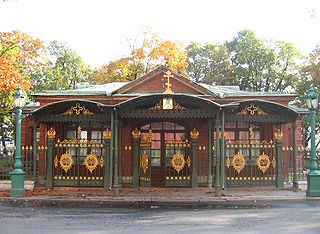 W
WThe cabin of Peter the Great is a small wooden house which was the first St Petersburg "palace" of Tsar Peter the Great.
 W
WThe Fairmont Le Château Montebello, formerly and commonly known as the Château Montebello, is a historic hotel and resort complex in Montebello, Quebec, Canada. The resort features a large game reserve, as well as claims to be the largest wooden structure in the world. The wooden hotel structure was developed by Victor Nymark.
 W
WThe Coates Creek Schoolhouse is a historic one-room log schoolhouse in rural Mesa County, Colorado, on a county road known as DS Road, about 16 miles (26 km) west of the hamlet of Glade Park, Colorado. It was listed on the National Register of Historic Places in 1993.
 W
WThe Country Woman's Club was founded in the unincorporated community of St. Bethlehem, Tennessee in 1922, as a monthly meeting at one of the member's houses. It expanded to 35 members who eventually moved to meet at the White's Creek Chapel School.
 W
WThe dogtrot, also known as a breezeway house, dog-run, or possum-trot, is a style of house that was common throughout the Southeastern United States during the 19th and early 20th centuries. Some theories place its origins in the southern Appalachian Mountains. Some scholars believe the style developed in the post-Revolution frontiers of Kentucky and Tennessee. Others note its presence in the South Carolina Lowcountry from an early period. The main style point was a large breezeway through the center of the house to cool occupants in the hot southern climate.
 W
WThe First Baptist Church in Hardin, Montana, at 524 N. Custer Ave., was built in 1931. It was listed on the National Register of Historic Places in 1991.
 W
WThe Hecla House, in Beaverhead County, Montana near Melrose, was built in 1881. It was listed on the National Register of Historic Places in 2005.
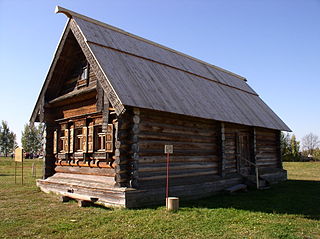 W
WAn izba is a traditional Slavic countryside dwelling. Often a log house, it forms the living quarters of a conventional Russian farmstead. It is generally built close to the road and inside a yard, which also encloses a kitchen garden, hay shed, and barn within a simple woven stick fence. Traditional, old-style izba construction involved the use of simple tools, such as ropes, axes, knives, and spades. Nails were not generally used, as metal was relatively expensive, and neither were saws a common construction tool. Both interior and exterior are of split pine tree trunks, the gap between is traditionally filled with river clay, not unlike the North American log cabin.
 W
WThe Jicarilla Schoolhouse, in Jicarilla, New Mexico on New Mexico State Road 349 in Lincoln National Forest, was built in 1907. It was listed on the National Register of Historic Places in 1983.
 W
WThe Johnny Sack Cabin, at Big Springs, Idaho near Island Park, is a log bungalow built in 1932–34. It was listed on the National Register of Historic Places in 1979.
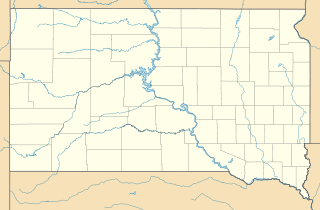 W
WThe L.W. Shevling Ranch, in Harding County, South Dakota, dates from 1883. A 3.5 acres (1.4 ha) portion was listed on the National Register of Historic Places in 1987.
 W
WLaimes also known as "Lehms", "Lehmhus", "Leimes" is a clay daub faced granaries particular to Upper Silesia. Origin of name is thought to be from Lehm (clay), but with the local dialect corrupted to Laimes. Once they were common left of the River Odra (Oder) but are thought to be no longer found there. In the district of Głubczyce (Leobschütz) this vernacular building form was primarily only found in the two villages of Rozumice (Rösnitz) and Pilszcz (Piltsch). Originally all farmhouses and even some small-holdings in the village would have had its own Laimes but, by the end of World War I in Rozumice there were only 22 remaining and today there is only one standing example., now the subject of a restoration proposal.
 W
WThe Lamb Creek School, in Bonner County, Idaho near the city of Priest River, Idaho, was listed on the National Register of Historic Places in 1999.
 W
WA lean-to is a type of simple structure originally added to an existing building with the rafters "leaning" against another wall. Free-standing lean-to structures are generally used as shelters. One traditional type of lean-to is known by its Finnish name laavu.
 W
WThe Teodoro Martinez House, near Los Ojos, New Mexico, was built around 1900. It was listed on the National Register of Historic Places in 1985. The listing included two contributing buildings.
 W
WThe Abraham Miller House, near Stanford, Kentucky, was listed on the National Register of Historic Places in 2001.
 W
WThe Peter Norbeck Summer House, in Custer State Park near Custer, South Dakota, was built in 1927. It was listed on the National Register of Historic Places in 1977. It has also been known as Valhalla.
 W
WThe Rock Creek Stage Station, in Routt County, Colorado near Toponas, Colorado.
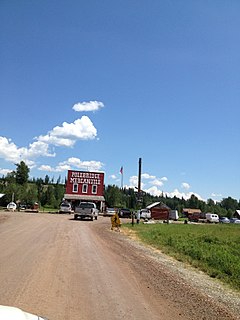 W
WThe W. L. Adair General Mercantile Historic District is a 4 acres (1.6 ha) historic district in Polebridge in Flathead County, Montana which was listed on the National Register of Historic Places in 1986. It included five contributing buildings which were built during 1900–1914.
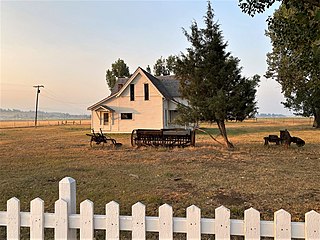 W
WThe Whaley Homestead, in Ravalli County, Montana near Stevensville, Montana, was listed on the National Register of Historic Places in 1992. The listing included four contributing buildings and four contributing sites.
 W
WThe Yukon Hotel is a National Historic Site of Canada and part of the Dawson Historical Complex. It is a log building with a three-storey false facade on First Avenue at the corner of Church Street in Dawson City, Yukon.